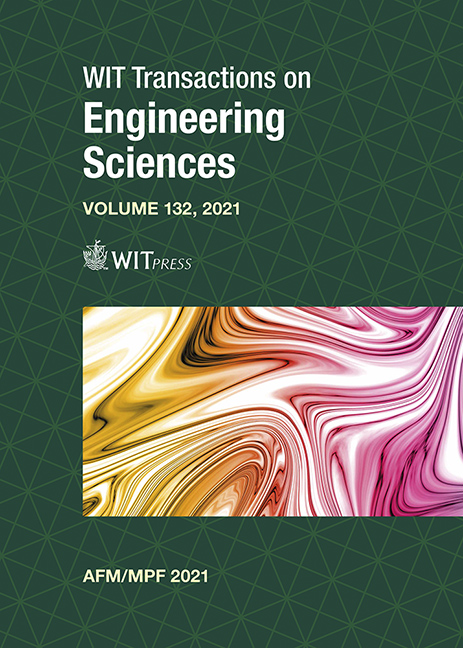EXPERIMENTAL INVESTIGATION OF THE TRANSITION ZONE OF AIR–STEAM MIXTURE JETS INTO STAGNANT WATER
Price
Free (open access)
Transaction
Volume
132
Pages
11
Page Range
37 - 47
Published
2021
Paper DOI
10.2495/MPF210041
Copyright
Author(s)
YAISEL CÓRDOVA, DAVID BLANCO, CÉSAR BERNA, JOSÉ LUIS MUÑOZ-COBO, ALBERTO ESCRIVÁ, YAGO RIVERA
Abstract
The phenomenon of direct contact condensation of steam into pools with subcooled water is of great interest for various industrial applications, allowing rapid condensation of steam by providing high heat transfer and mass exchange capacity. For the nuclear industry it is of great interest to understand steam condensation in the presence of non-condensable (NC) gases from the point of view of passive safety of nuclear power plants. Currently there are several experimental studies related to steam and noncondensable gas discharges in pools, but work is still in progress to obtain a wider range of information. The objective of the present study is to characterize the horizontal jet behavior in the transition zone, when initially steam is being discharged and then a small fraction of air is injected. An abrupt change in behavior is observed when a jet dominated totally by momentum forces experiences the impulse of buoyancy forces induced by the non-condensable gases. This phenomenon is due to the deterioration of heat transfer caused by the presence of air. This fact limits condensation by direct contact and modifies the trajectory of the submerged gases. Direct visualization techniques using a high-speed camera and image processing methods are used to characterize this jet behavior. Different tests have been performed by varying the steam flow rate, pool water temperature and nozzle diameter. In each of the tests, the air flow rate required for the transition zone to occur was determined. The processing of the obtained images is performed by means of a multi-step subroutine in MATLAB. Experimental results showed that the water temperature and nozzle diameter play an important role in the transition zone from the pure jet to the steam-air mixture jet.
Keywords





